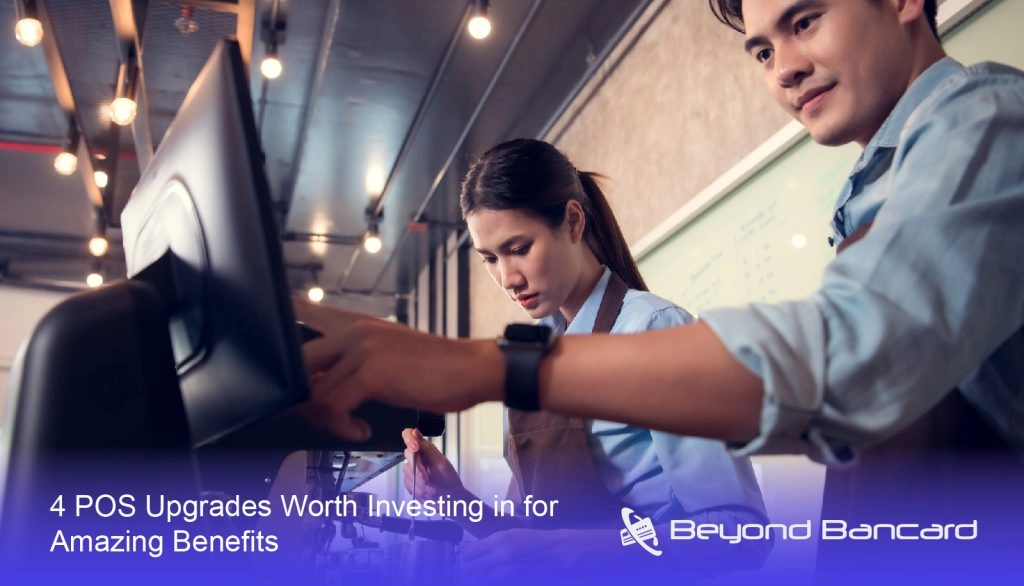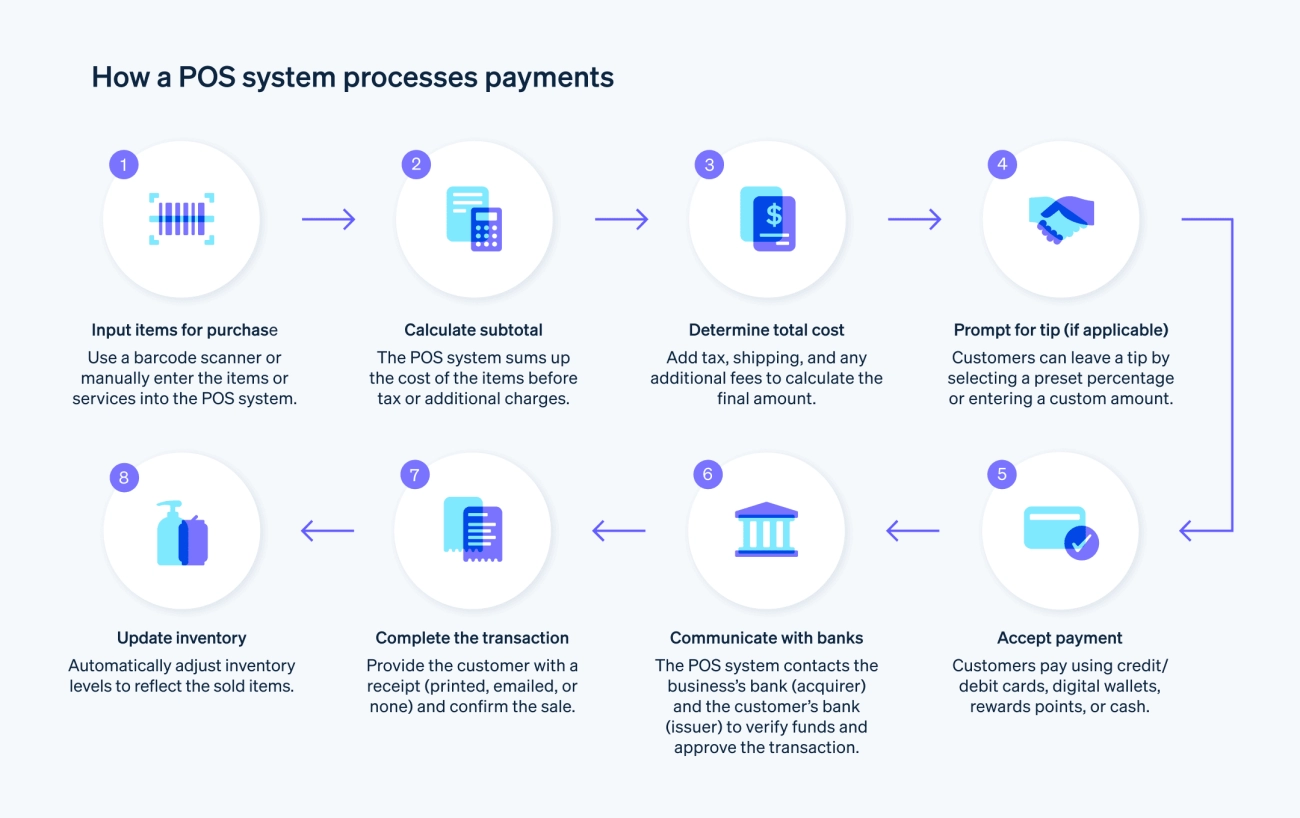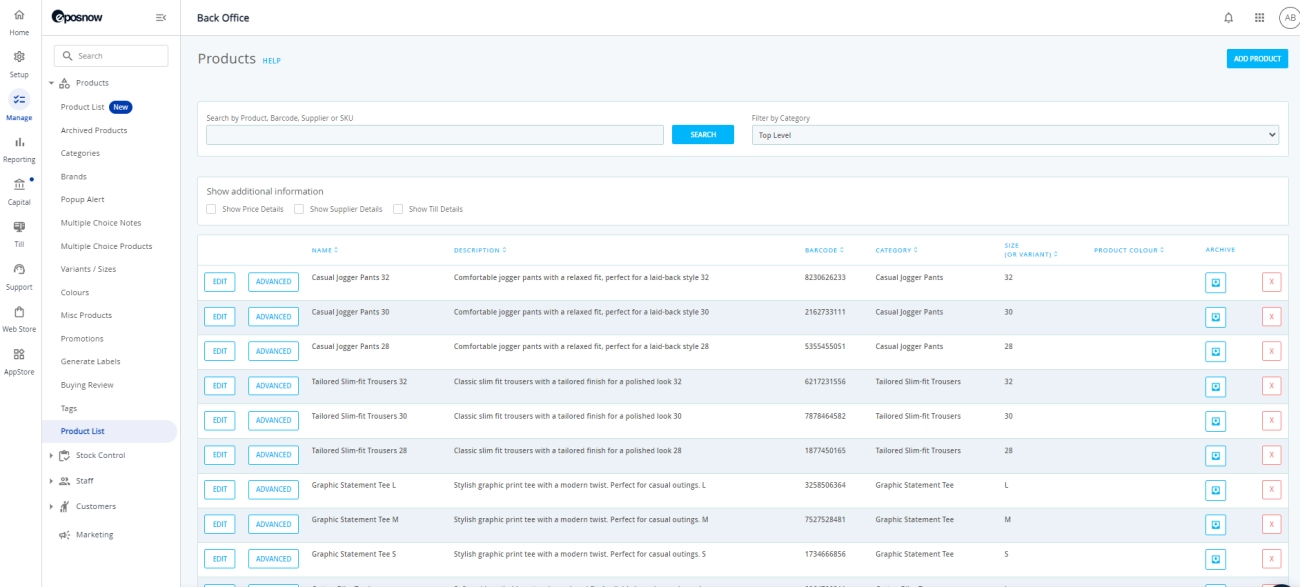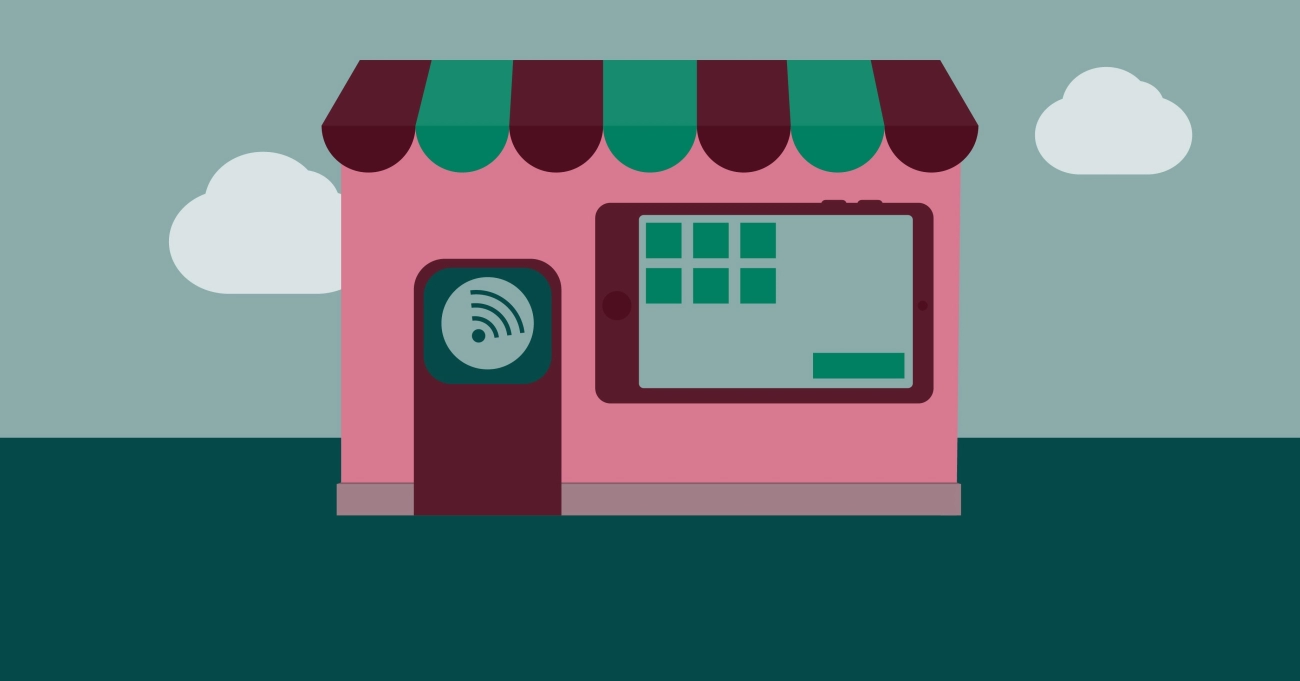Top Benefits of Upgrading to a Modern POS System for Your Business

What is a POS System Understanding Core Components and Key Differences

A POS system, or point of sale system, is the technology that retailers and businesses use to complete sales transactions. It combines hardware and software to manage sales, inventory, and customer data, going far beyond what a traditional cash register can do.
Core Components of a Modern POS System
A modern POS system integrates several key parts working together to streamline business operations:
- Hardware: This includes touchscreens, barcode scanners, receipt printers, cash drawers, and payment terminals.
- Software: The brain of the system, managing sales processing, inventory tracking, customer management, and reporting.
- Payment Processing: Integration with multiple payment methods like credit cards, mobile payments, and contactless options.
- Cloud Connectivity: Enables real-time data syncing across locations and remote access to sales and inventory information.
Difference Between Traditional Cash Registers and Modern POS Systems
| Feature | Traditional Cash Registers | Modern POS Systems |
|---|---|---|
| Functionality | Basic sales recording and cash handling | Full sales processing and business management |
| Inventory Management | Manual tracking and updates | Automated real-time inventory control |
| Sales Reporting | Limited, often manual | Detailed, real-time analytics |
| Payment Options | Cash and basic card reader | Multiple payment methods, including mobile wallets |
| Customer Data Management | Not supported | Integrated loyalty programs and CRM |
| Integration Capabilities | Standalone device | Connects with e-commerce, accounting, and other systems |
Unlike basic cash registers, modern POS systems provide comprehensive solutions that improve overall business efficiency. They are essential tools for today’s retailers looking to increase sales, reduce errors, and offer better customer experiences.
For a closer look at the differences, check out our guide on cash register vs POS system differences.
In short, upgrading your traditional cash register to a modern POS system means switching to smarter technology tailored to meet the demands of today’s competitive retail environment.
Key Benefits of Upgrading to a POS System Increased Sales and Revenue Tracking
![]()
Upgrading to a modern POS system offers clear advantages for boosting your sales and keeping a sharp eye on your revenue. Unlike traditional cash registers, a POS system gives you real-time sales monitoring so you always know exactly how your business is performing throughout the day.
Real-time Sales Monitoring
With a modern retail POS system, you can track every transaction the moment it happens. This means:
- Instant access to daily sales data
- Quick identification of best-selling products
- Spotting slow movers fast so you can adapt strategies
- Immediate insights into peak hours to optimize staffing
Having sales information at your fingertips allows you to make timely decisions that improve revenue without waiting for end-of-day reports.
Better Inventory Control to Reduce Stockouts and Overstocks
One of the biggest drains on profit comes from poor inventory management. A POS system helps tackle this with real-time inventory updates every time a sale occurs. This offers benefits like:
- Preventing stockouts, ensuring popular items are always available
- Avoiding overstock, cutting down on excess inventory holding costs
- Automated reorder alerts so you never run low on essentials
- Improved supplier management with purchase order integration
This point of sale system advantage means you keep stock balanced, reduce waste, and increase customer satisfaction by delivering what they want, when they want it.
| Benefit | Traditional Register | Modern POS System |
|---|---|---|
| Sales Tracking | Manual, delayed | Real-time, automated |
| Inventory Updates | Manual counts, prone to error | Real-time, automatic |
| Stock Control | Reactive | Proactive, with alerts |
| Revenue Insights | Limited, periodic | Detailed, instant |
By upgrading your system, you turn sales and inventory management into a continuous, accurate process—key for increasing profits and business efficiency.
Streamlined Checkout Process with a POS System Upgrade

Upgrading to a modern POS system makes checkout faster and smoother, which customers and staff both appreciate. Here’s how it improves the process:
Faster Transactions and Shorter Queues
- Speedy scanning and processing: Unlike traditional cash registers, a POS system quickly scans items with barcode readers and instantly applies pricing and discounts.
- Quick access to product info: Cashiers can find products and prices fast, preventing delays at the register.
- Efficient handling of returns and exchanges: Automated workflows cut down transaction time for refunds or product swaps.
- Reduced wait times: Faster transactions mean shorter lines, leading to better customer satisfaction and higher chances of repeat visits.
Multiple Payment Options Integration
- Accept a variety of payment methods: Credit and debit cards, mobile wallets like Apple Pay or Google Pay, gift cards, and even contactless payments are supported.
- Secure transactions: Advanced encryption and compliance with payment standards protect customer data.
- Seamless split payments: Customers can split bills between cards or cash without hassle.
- Flexible checkout experiences: Mobile POS terminals and tablet-based checkouts can speed up service anywhere in the store.
| Benefits | Traditional Cash Register | Modern POS System |
|---|---|---|
| Transaction Speed | Slower, manual input | Fast barcode scanning and automation |
| Payment Options | Mostly cash and limited cards | Cards, mobile wallets, contactless |
| Queue Management | Longer wait times | Shorter lines with efficient flow |
| Checkout Flexibility | Fixed terminal location | Mobile and multiple terminal options |
Upgrading your POS equips your business with the tools to keep customers moving through checkout quickly while offering diverse payment choices—all key for improving efficiency and boosting sales.
Improved Accuracy and Reduced Human Error with POS System Upgrade
Upgrading to a modern POS system brings significant improvements in accuracy, helping you avoid costly mistakes common with traditional cash registers. Here’s how:
Automated Calculations and Pricing Accuracy
- Automatic Price Updates: Modern POS systems update pricing instantly across all terminals, ensuring your customers always get the correct price, even during sales or promotions.
- Built-in Tax Calculations: They automatically calculate applicable taxes based on location, removing guesswork and keeping you compliant with local regulations.
- Discount and Coupon Handling: Apply discounts, coupons, and special offers without manual errors, preventing over- or undercharging.
Error Alerts and Prevention Mechanisms
- Real-Time Error Alerts: If an operator enters incorrect data—for example, wrong item codes or quantities—the POS immediately flags it. This reduces inventory mismatches and pricing mistakes.
- Preventing Duplicate Transactions: The system detects and blocks duplicate sales or returns, which helps maintain accurate financial records.
- Inventory Sync Checks: The POS cross-checks stock levels before completing sales to avoid selling products that aren’t available, reducing backorders and disappointing customers.
Benefits at a Glance
| Benefit | Description | Impact |
|---|---|---|
| Automated Pricing | Instant price updates and tax calculations | Fewer checkout errors |
| Error Alerts | Real-time warning for wrong entries | Reduces costly mistakes |
| Duplicate Transaction Block | Stops repeated sales or returns | Keeps records clean |
| Stock Level Validation | Verifies inventory levels before sale | Prevents overselling |
By upgrading your POS system, you are boosting accuracy, reducing human errors, and saving time spent on manual checks or corrections. This leads to smoother operations and improved customer trust, making your business more reliable every day.
For more details on the components that make these improvements possible, check out Components of a Modern POS System.
Enhanced Customer Experience with a POS System Upgrade
Upgrading to a modern POS system brings a significant boost to customer experience—a key factor for any business aiming to stay competitive in the US market. Here’s why:
Faster Service Means Happier Customers
A modern POS system speeds up checkout by automating tasks like scanning, pricing, and payment processing. This means:
- Shorter wait times during busy periods
- Quick processing of returns and exchanges
- Smooth handling of discounts or promotions without slowing the line
Faster service keeps customers satisfied and encourages repeat visits.
Integration with Loyalty Programs
Modern POS systems easily link with loyalty and rewards programs. This lets you:
- Automatically track customer purchases
- Apply rewards or discounts instantly at checkout
- Collect data for personalized offers
Personalized rewards make customers feel valued and more connected to your brand.
Personalized Marketing Capabilities
With the right POS upgrade, you get built-in marketing tools that analyze buying habits to:
- Send targeted promotions based on preferences
- Notify customers about upcoming sales or new products
- Run email or SMS marketing campaigns without extra software
This personalized approach increases customer engagement and sales over time.
of Customer Experience Benefits
| Benefit | What It Means for Your Business |
|---|---|
| Faster Service | Reduces queues, boosts satisfaction |
| Loyalty Program Integration | Builds repeat business and customer loyalty |
| Personalized Marketing | Drives targeted promotions and higher sales |
For a deeper dive into improving customer service with POS systems, check out How POS Systems Improve Customer Experience.
By choosing to upgrade your point of sale system, you’re not just updating technology—you’re investing in smoother service and stronger customer relationships that grow your business.
Comprehensive Reporting and Analytics with a POS System

Upgrading to a modern POS system brings powerful reporting and analytics features that traditional cash registers just can’t match. These insights are key to understanding your sales trends, customer behavior, and overall business performance—helping you make smarter, data-driven decisions.
Gain Clear Sales Trends and Patterns
With a POS upgrade, you get detailed reports on:
- Daily, weekly, and monthly sales
- Peak selling hours and slow periods
- Best-selling products and categories
- Seasonal trends and promotions performance
This level of detail helps you identify what’s working and where to focus your efforts for maximum revenue.
Understand Your Customers Better
Modern POS systems track customer purchases and preferences, offering insights such as:
- Repeat buyers and purchase frequency
- Popular payment methods
- Customer demographics (age, location if collected)
- Product preferences linked to specific customer groups
These findings allow you to tailor marketing efforts, loyalty programs, and inventory to your customers’ needs.
Make Data-Driven Decisions
Accessing real-time data means you can quickly:
- Adjust pricing or promotions based on sales performance
- Optimize inventory levels and avoid overstock or stockouts
- Forecast demand more accurately
- Allocate staff efficiently during busy periods
Reporting Features Table
| Reporting Feature | Benefit |
|---|---|
| Sales | Track revenue by day/week/month |
| Product Performance | Identify top and slow movers |
| Customer Insights | Personalize marketing |
| Inventory Analytics | Reduce waste and stock problems |
| Staff Performance | Optimize labor scheduling |
By upgrading your POS system, you’re not just improving transactions—you’re gaining a full picture of your business health. This helps you stay competitive and grow with confidence in the dynamic U.S. marketplace.
Better Inventory Management with POS System Upgrade
Upgrading to a modern POS system brings smart, efficient inventory management that helps your business stay on top of stock without the usual headaches. Unlike manual tracking or simple cash registers, a POS system gives you real-time stock updates as sales happen. This means you always know exactly what’s available, avoiding overselling or running out of popular items.
Real-time Stock Updates
- Instant inventory changes: Every sale or return is immediately reflected in your inventory.
- Avoid stockouts and overstocks: Stay balanced by knowing what’s moving fast or sitting on shelves.
- Better shelf management: Allocate stock across locations smoothly if your business has multiple stores.
Automated Reorder Points and Supplier Management
- Set reorder alerts: Your POS can automatically notify you when stock levels hit a programmed threshold so you reorder on time.
- Streamlined supplier orders: Some systems even connect directly with suppliers, making restocking faster and reducing manual work.
- Minimize carrying costs: Smart ordering reduces excess inventory and frees up cash flow.
| Inventory Feature | Benefit |
|---|---|
| Real-time stock tracking | Avoid stockouts and adjust orders quickly |
| Automated reorder alerts | Never run out of high-demand products |
| Integrated supplier management | Simplifies and speeds reorder process |
| Multi-location inventory sync | Keeps stock balanced across all stores |
Using a POS system tailored for local businesses in the US means inventory aligns with your sales patterns and supplier schedules, reducing waste and missed sales. It’s a key advantage that helps you run a smoother operation and make smarter buying decisions every day.
Scalability and Flexibility of Upgrading to a POS System
When you upgrade to a modern POS system, you’re investing in more than just faster checkouts—it’s about future-proofing your business. One of the biggest advantages of modern POS software is its scalability and flexibility, which makes managing your operations easier whether you run a single store or multiple locations.
Seamless Integration with E-commerce and Accounting Software
A key benefit of advanced POS solutions is how well they connect with other systems you already use:
- E-commerce platforms: Sync your online and in-store sales effortlessly so inventory and orders stay accurate across the board.
- Accounting software: Automate your financial reporting and simplify tax preparation by linking sales data directly to accounting tools like QuickBooks or Xero.
This integration not only saves time but also improves accuracy, helping you keep all parts of your business aligned.
Support for Multi-location Businesses
If you’re running more than one store, a modern POS system makes expansion and management much smoother:
- Centralized management: Oversee sales, inventory, and staff across all locations from a single dashboard.
- Consistent customer experience: Maintain uniform pricing, promotions, and loyalty programs everywhere.
- Inventory transfers: Easily move stock between stores to balance supply and demand.
This flexibility means your POS grows with your business, supporting new stores or even pop-ups without the headache of separate systems.
| Scalability Features | Benefits |
|---|---|
| Integration with e-commerce | Unified online and offline sales |
| Accounting software connection | Simplified bookkeeping and tax handling |
| Multi-location support | Central management and consistent operations |
By upgrading your POS system, you gain a platform that not only handles today’s needs but adapts as your business evolves, making operations more efficient and less stressful.
Why Choose SDLPOS for Your POS System Upgrade
Upgrading to a modern POS system is a big step for your business, and SDLPOS stands out as a trusted partner for retailers across the United States. Here’s why choosing SDLPOS gives you the edge you need.
Proven Expertise and Wide Product Range
SDLPOS specializes in retail POS system solutions tailored to fit small and medium businesses. Their product lineup covers everything from simple touchscreen registers to fully integrated POS systems with inventory and sales tracking features. This range means you get a system that matches your business size and goals without overpaying for unnecessary extras.
Local Support and Customization Options
One of SDLPOS’s biggest advantages is local, hands-on support. You’re not just getting software; you get a team that understands your local market and business challenges. They offer:
- Custom settings designed for your specific retail environment
- Software adjustments that fit local payment methods and regulations
- On-site or remote assistance to resolve issues quickly
Competitive Pricing with Easy Installation
SDLPOS knows every dollar counts. Their pricing is competitive and transparent, avoiding hidden costs. Plus, they handle the installation process smoothly with minimal downtime, so your business runs uninterrupted.
| Feature | Benefits |
|---|---|
| Competitive pricing | Affordable upgrades within budget |
| Quick installation | Minimal disruption to daily operations |
| Flexible payment options | Easy financing and purchase plans available |
Trusted by Local Businesses
SDLPOS has gathered solid testimonials and case studies from businesses right here in the US. Clients praise them for boosting sales through more efficient checkout, better inventory control, and enhanced customer engagement—key benefits that come with upgrading POS systems.
- Reliable system uptime
- Responsive customer service
- Smooth transition and training support
Partnering with SDLPOS means you get more than just a product—you get a POS upgrade designed to grow your business efficiently while keeping your unique needs front and center.
How to Get Started with Your POS Upgrade
Upgrading your POS system can feel like a big move, but breaking it down into clear steps helps make the process smooth and hassle-free. Here’s a straightforward step-by-step guide to evaluate and upgrade your current system while ensuring minimal disruption to your daily business operations.
Step 1 Evaluate Your Current POS System
Before upgrading, take a close look at what you’re currently using:
- Identify pain points: Are transactions slow? Is inventory tracking inaccurate? Note any gaps.
- List must-have features: Think about what your business needs now, like real-time sales monitoring, loyalty program integration, or multi-location support.
- Check compatibility: Make sure your hardware and software can sync with new POS solutions if you plan a partial upgrade.
- Budget limits: Know how much you’re willing to invest, factoring in installation and training costs.
This evaluation helps you compare what’s available in the market and find the best upgrades that offer clear POS system upgrade benefits.
Step 2 Request a Consultation and Demo
Once you have a clear idea of your requirements:
- Reach out to local POS system providers like SDLPOS to get personalized advice.
- Schedule a demo: Seeing the software in action gives a real feel for user-friendliness and fit.
- Ask about integration: Confirm how the new POS connects with your accounting, e-commerce, or existing systems.
- Discuss customization: Local providers often offer tailored solutions that fit your specific business model and market.
- Clarify support and training: Find out what options are available post-installation to keep your staff confident.
Demos and consultations minimize risks and set you up for success with your new retail POS system.
Step 3 Plan Your Transition to a New POS System
Switching systems doesn’t have to bring chaos. Here’s how to make the transition smooth:
- Schedule the upgrade during off-hours or slow business days to reduce impact on customers.
- Train your staff before going live: Hands-on practice prevents mistakes during busy times.
- Backup all data: Safeguard sales records, inventory, and customer info beforehand.
- Run parallel systems briefly if possible, to catch any issues early.
- Communicate with your team and customers: Let everyone know about the new system and possible temporary hiccups.
Careful planning ensures you enjoy all the advantages of modern POS software without downtime or lost sales.
Final Thoughts
Upgrading to a modern POS system with the right planning and support will improve your business efficiency, boost sales, and offer better customer service. By evaluating your current setup, engaging with local experts, and managing the transition day thoughtfully, you set yourself up for a smooth and profitable upgrade experience.
Frequently Asked Questions About Upgrading to a POS System
Upgrading to a modern POS system raises a lot of common questions. Here’s a clear breakdown of what you need to know about cost considerations, security features, and compatibility with your existing systems.
Cost Considerations for POS System Upgrade
- Initial Investment vs Long-Term Savings: While upgrading to a POS system may require an upfront cost for hardware, software, and setup, the boost in efficiency and sales tracking often pays off quickly.
- Flexible Pricing Models: Many POS providers, including local ones like SDLPOS, offer subscription plans or modular pricing. This allows small businesses to pick features they need without paying for extras.
- Maintenance and Support: Check whether ongoing support, software updates, and hardware warranties are included. This adds value and reduces surprise expenses down the road.
Security Features of Modern POS Systems
- Data Encryption: Modern POS systems encrypt customer payment information to prevent data theft during transactions.
- PCI Compliance: Ensure your POS provider meets Payment Card Industry Data Security Standards (PCI DSS), protecting both your business and your customers.
- User Access Controls: Many POS systems allow admins to set permission levels, minimizing internal risks by restricting sensitive operations to authorized staff only.
- Regular Software Updates: Updates patch vulnerabilities and improve security features, safeguarding your system from evolving cyber threats.
Compatibility With Existing Systems
- Integration Capabilities: Most advanced POS solutions are designed to smoothly integrate with popular accounting software, e-commerce platforms, and inventory management tools common in U.S. small businesses.
- Hardware Flexibility: Many POS systems support existing peripherals like barcode scanners and receipt printers, limiting the need for complete hardware overhauls.
- Data Migration Support: A quality POS upgrade provider will assist with transferring historical sales and inventory data to avoid business interruptions.
- Multi-Location Support: For businesses expanding across several stores, modern POS systems can consolidate operations, providing unified reporting and control.
For more insight into what a POS system can do for your business and how it differs from traditional registers, check out our detailed guide on what is a point of sale system and explore the components of a modern POS system.
Upgrading your POS system is a smart move for any business looking to improve sales, security, and efficiency—all while providing better customer experiences. Understanding these frequently asked questions can help you make the best choice for your business’s needs.
